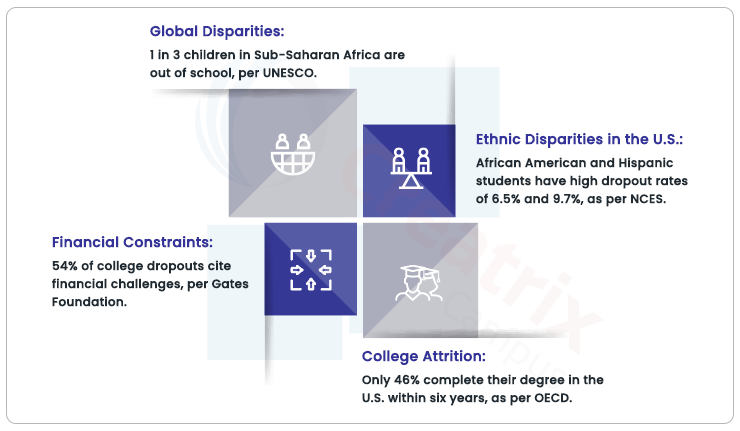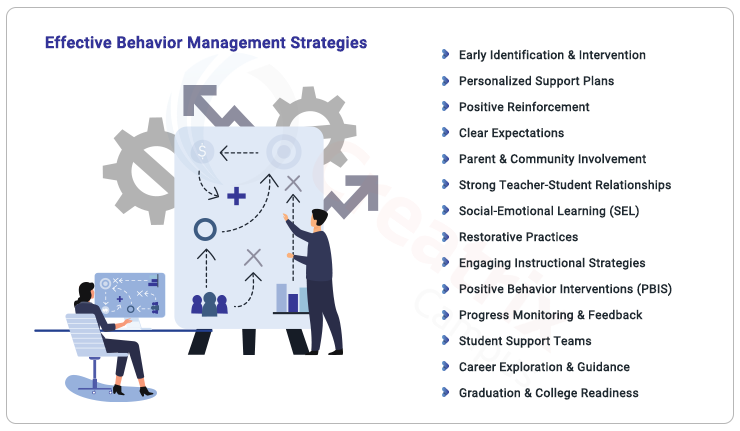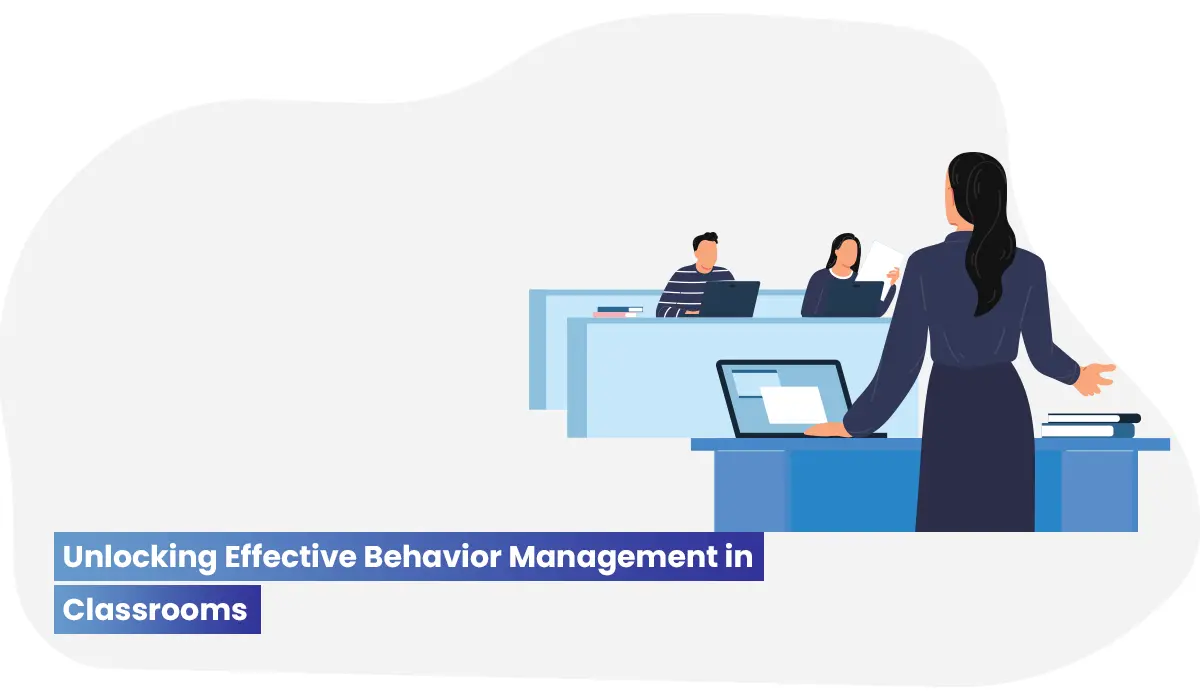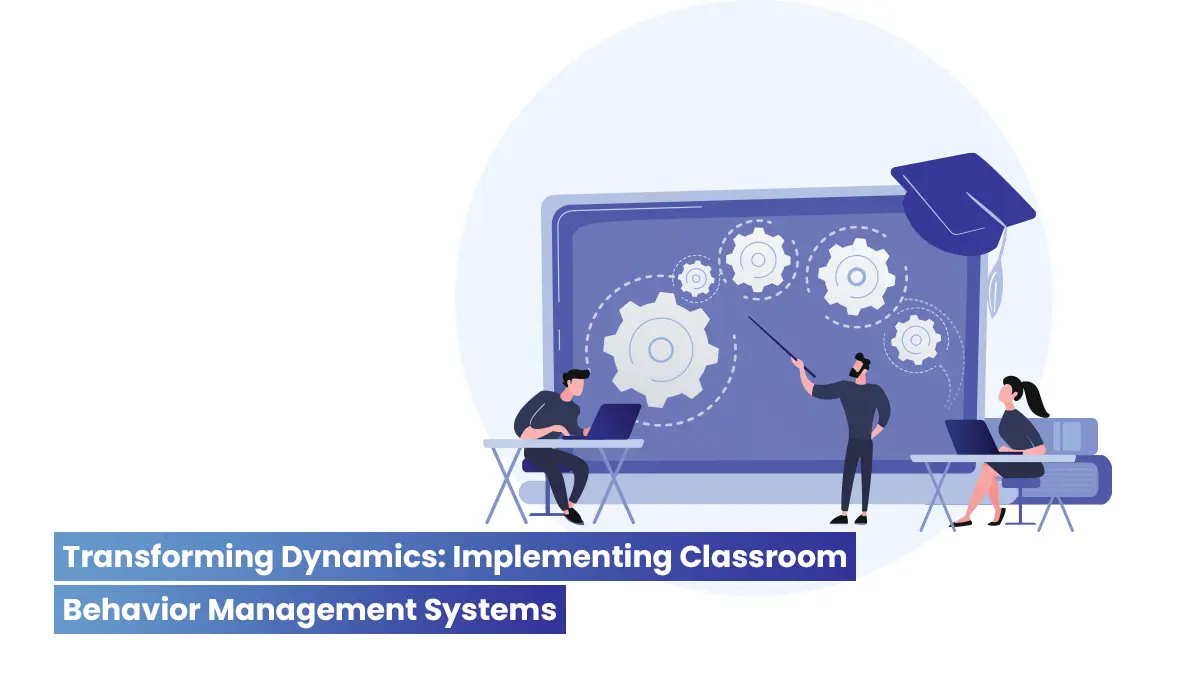Enhancing Success: Effective Behavior Management Strategies to Reduce Student Dropout Rates

In the pursuit of knowledge and education, there is an alarming global challenge that cannot be overlooked - the rising student dropout rates. As more students disengage from their educational path, higher educational institutions are increasingly turning to Behavior Management Strategies as a powerful solution.
As per UNESCO, over 260 million children were out of school in 2019, underscoring a critical global dropout crisis. The national high school dropout rate in the United States was reported at 5.4% in 2020, with varying disparities among different ethnic and socioeconomic groups, as revealed by the National Center for Education Statistics. Beyond the individual impact, the economic repercussions of high dropout rates are also profound. Studies have further demonstrated that the estimated loss in lifetime earnings for high school dropouts in the U.S. is staggering, reaching up to $260,000, as indicated by the Alliance for Excellent Education.
These statistics paint a distressing picture, emphasizing the urgency to address the root causes and implement effective strategies to prevent student dropout. Let’s delve into the crucial topic of "Effective Behavior Management Strategies to Reduce Student Dropout Rates," with the objective to explore the pivotal role behavior management plays in reducing dropout rates and contributing to a more successful educational experience.
Understanding the Impact of Student Dropout Rates
The term dropout rate refers to the percentage of students failing to complete a particular school or college course.
In the realm of education, student dropout rates stand as a critical challenge that warrants our attention. The repercussions of students disengaging from their educational journey go far beyond the individual level, casting a profound impact on society as a whole. To address this pressing issue, it is crucial to gain a comprehensive understanding of student dropout rates and the implications they hold.
We have managed to pull out some statistics and data that highlight the stark reality of students leaving their educational path prematurely. Understanding the profound impact on both the lives of individuals and the broader societal landscape is essential to drive transformative change.
Statistics and data on student dropout rates
The statistics and data that we have collated underscore the severity of the student dropout crisis and highlight the urgent need for effective behavior management strategies to reduce dropout rates.
Global Disparities: In Sub-Saharan Africa, nearly 1 in 3 children of primary school age are out of school, and two-thirds of these children are unlikely to ever enter a classroom, as per the UNESCO Institute for Statistics.
Ethnic Disparities in the U.S.: The National Center for Education Statistics reveals that the high school dropout rate among African American and Hispanic students in the United States stands at 6.5% and 9.7%, respectively, underscoring the urgency to address this disparity.
College Attrition: The Organisation for Economic Co-operation and Development (OECD) reports that only 46% of students in the United States complete their degree within six years, highlighting the need for effective retention strategies.
Financial Constraints: A study by the Bill & Melinda Gates Foundation found that financial challenges are a primary reason for college dropouts, with 54% of students citing financial constraints as a major barrier.

Students who drop out of school often face limited job prospects, as many employers require a high school diploma or college degree for entry-level positions. This can lead to long-term financial struggles and hinder social mobility. Dropping out of school can have adverse effects on student's mental health, leading to feelings of failure, low self-esteem, and an increased risk of depression and anxiety.
Reasons why students drop out?

Student dropout rates are influenced by a myriad of factors. Identifying and understanding these underlying causes is crucial for developing effective strategies to prevent dropout and promote student success. Some of the reasons why students often drop out include;
- Financial constraints and inability to afford tuition fees and expenses.
- Academic challenges and poor performance in studies.
- Lack of motivation or interest in the chosen field of study.
- Personal or family issues, such as health problems or caregiving responsibilities.
- Balancing work and studies leads to burnout and exhaustion.
- Inadequate support systems and lack of guidance from educational institutions.
- Social and peer pressures can distract students from their studies.
- Inability to adapt to the new environment or culture of the institution.
- Limited access to necessary resources and academic support services.
- Mental health issues, stress, and anxiety impact student well-being.
The Role of Behavior Management in Dropout Prevention
Behavior management is a cornerstone in creating a positive and supportive learning environment that empowers students to thrive academically. It refers to the systematic approach of creating a positive and supportive learning environment that promotes desirable behaviors and reduces disruptive or negative ones. It involves implementing strategies and interventions to address students' behavioral challenges, enhance their engagement, and support their academic success.
Behavior management helps prevent student dropouts by addressing the root causes of disengagement and identifying at-risk students early on. By fostering a positive and inclusive school culture, students feel more connected and motivated to stay in school. Effective behavior management practices can create a sense of belonging, build students' self-esteem, and improve their social and emotional skills, leading to increased academic achievement.
The connection between discipline, behavior, and student success
Discipline and behavior are closely intertwined with student success. Effective behavior management strategies instill discipline, promote self-control, and enable students to make responsible choices, bolstering their academic achievements and motivation to persist in their educational journey.
What researchers say about the effectiveness of behavior management in reducing dropout rates
Extensive research and studies underscore the effectiveness of behavior management in curbing dropout rates, backed by compelling data. Here are some key findings:
According to a series of compelling studies, proactive behavior management programs in schools have demonstrated their potential to significantly reduce dropout rates. A study published in the Journal of Educational Psychology revealed that schools implementing such programs experienced a remarkable decrease in dropout rates by up to 30%.
Similarly, research conducted by the National Dropout Prevention Center found that schools with comprehensive behavior management systems observed a 25% increase in student retention rates compared to those without such systems. Furthermore, a longitudinal study published in the American Educational Research Journal indicated that students in classrooms with strong behavior management practices were 50% less likely to drop out than their peers in classrooms with weaker management.
These findings are consistent with the U.S. Department of Education's National Center for Education Statistics, which reported that schools with well-implemented behavior management interventions saw an average increase of 15% in overall graduation rates over a five-year period.
These findings underscore the crucial role of behavior management in promoting student success and retention, emphasizing the importance of adopting proactive measures to address dropout rates effectively.
Identifying At-Risk Students through Behavior Analysis
Identifying At-Risk Students through Behavior Analysis involves utilizing data and observation to identify signs of academic struggle and disengagement among students. By analyzing students' behaviors, such as attendance patterns, class participation, and completion of assignments, educators can identify potential risks of academic failure and dropout.
Behavior analysis helps in detecting early warning signs, allowing for timely interventions and targeted support to help at-risk students stay on track and succeed academically. This proactive approach is vital in reducing student dropout rates and fostering a positive learning environment that supports every student's success.
Implementing Effective Behavior Management Strategies
Behavior management strategies play a vital role in preventing dropout by creating a positive and supportive learning environment that fosters student engagement and academic success. Here are some effective behavior management strategies for preventing dropout:

Early Identification and Intervention
Implement a system to identify at-risk students early on based on behavioral indicators, attendance patterns, and academic performance. Provide targeted support and interventions to address their specific needs promptly.
Individualized Support Plans
Develop personalized support plans for students at risk of dropout, addressing their unique challenges and providing resources such as tutoring, counseling, or mentorship.
Positive Reinforcement
Recognize and reward positive behaviors, achievements, and improvements to encourage students to stay engaged and motivated.
Establish Clear Expectations
Communicate clear behavioral expectations and academic goals to students. Ensure that they understand the consequences of negative behaviors and the benefits of positive choices.
Encourage Parent and Community Involvement
Involve parents, guardians, and the community in supporting students' academic success and behavior management. Collaborate with families to create a strong support network for the student.
Building Strong Teacher-Student Relationships
Foster positive teacher-student relationships based on trust and understanding. This connection can encourage students to feel supported and valued in the learning environment.
Social-Emotional Learning (SEL) Programs
Integrate social-emotional learning programs into the curriculum to help students develop self-awareness, emotional regulation, and interpersonal skills, which can positively impact behavior and academic performance.
Restorative Practices
Implement restorative approaches to conflict resolution, which prioritize repairing harm and building relationships rather than punitive measures. This approach helps students understand the impact of their actions and supports their personal growth.
Engaging Instructional Strategies
Use interactive and engaging teaching methods that cater to diverse learning styles, promoting student interest and active participation in the learning process.
Positive Behavior Interventions and Supports (PBIS)
Implement a PBIS framework that emphasizes proactive strategies for teaching and reinforcing positive behaviors. PBIS helps create a positive school culture and reduces the need for reactive disciplinary measures.
Monitor Progress and Provide Feedback
Regularly assess student progress and behavior, providing constructive feedback to help them stay on track and make improvements.
Student Support Teams
Establish support teams comprising teachers, counselors, administrators, and other staff members to collaboratively address students' academic and behavioral challenges.
Career Exploration and Guidance
Provide career exploration opportunities and guidance to help students understand the relevance of their education and how it can positively impact their prospects.
Graduation and College Readiness Programs
Offer programs that support college readiness and graduation preparation, motivating students to persist in their academic journey.
By implementing these behavior management strategies, educational institutions can create an environment that empowers students to succeed academically and reduces the likelihood of dropout.
Conclusion
Through a comprehensive exploration of research and statistics, we have seen the compelling impact of behavior management programs in curbing dropout rates and fostering a positive learning environment. Effective behavior management not only minimizes student disengagement but also nurtures a supportive and conducive atmosphere for academic success. By implementing behavior management strategies, educational institutions can provide a strong foundation for students to thrive, leading to increased retention and overall achievement.
At Creatrix Campus, we understand the pivotal role behavior management plays in shaping student outcomes. Our advanced student behavior and conduct management software offer innovative tools and solutions to help educational institutions create a positive and empowering learning environment. From identifying at-risk students to providing proactive interventions, our platform streamlines behavior management processes, supporting students on their educational journey. Contact our team to find out how we have been building a brighter future for students globally with our student conduct software.



